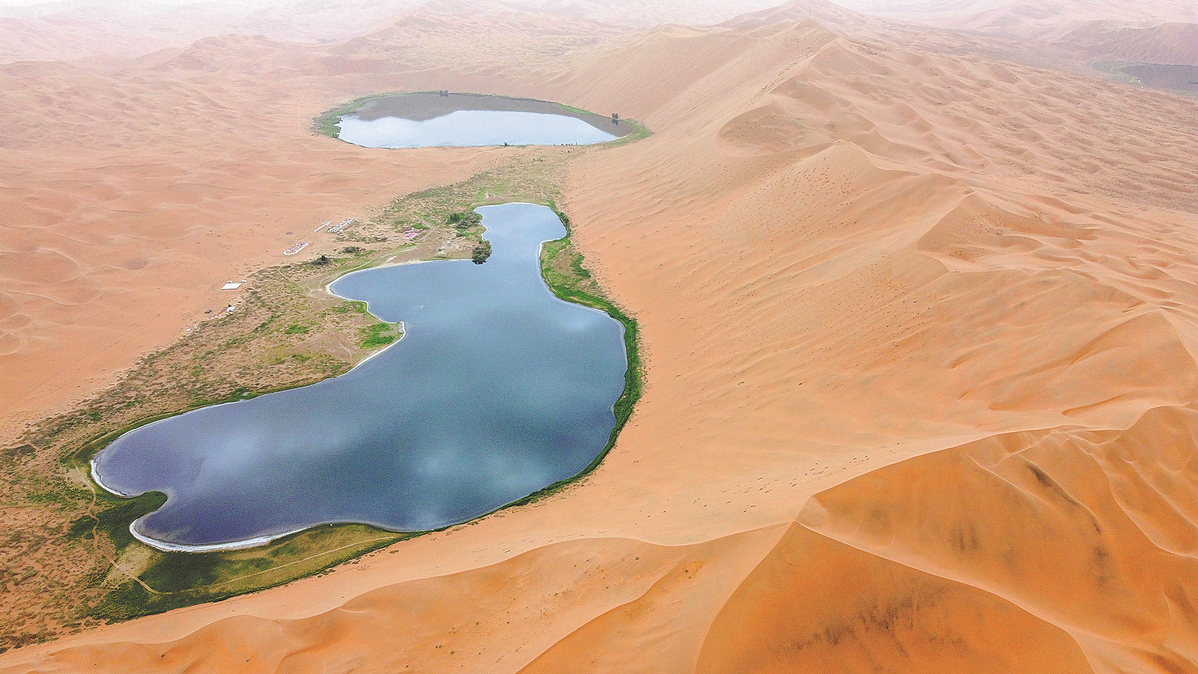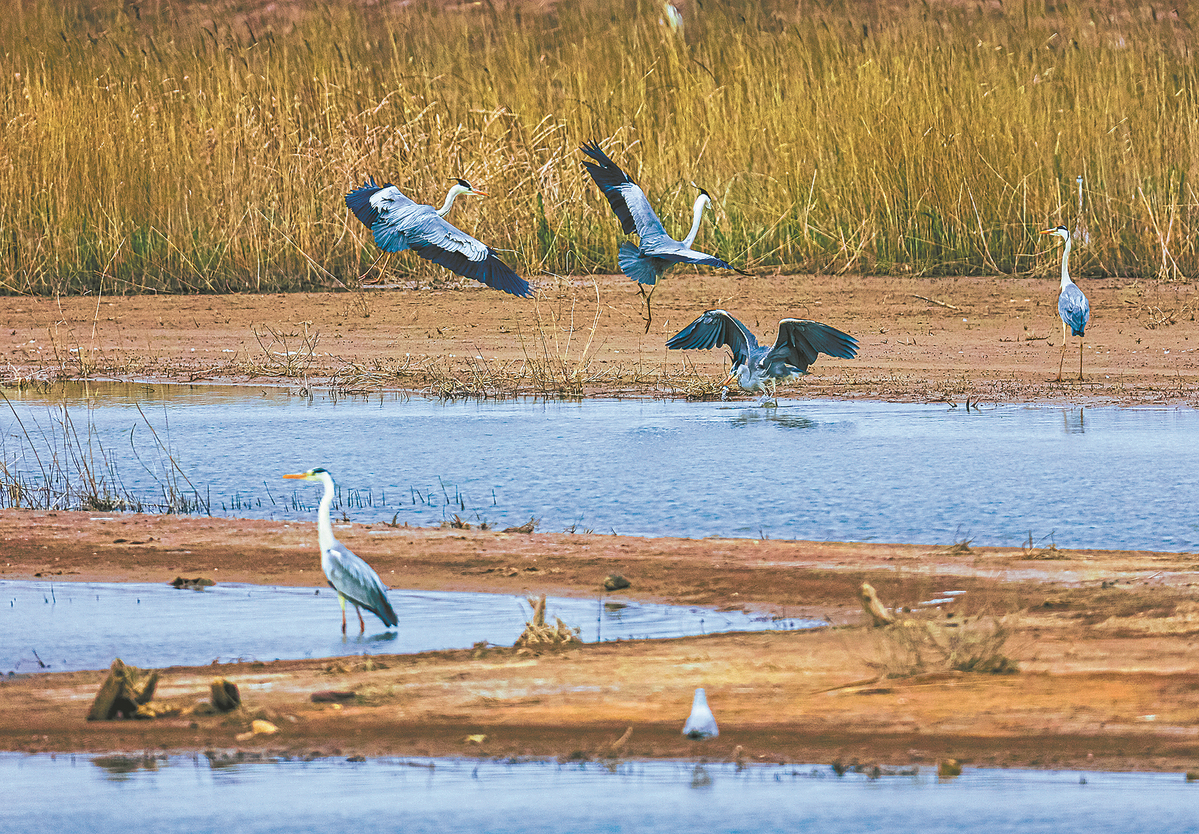
China's Badain Jaran Desert: Towers of Sand and Lakes, and the Migratory Bird Sanctuaries along the Coast of the Yellow Sea-Bohai Gulf of China (Phase II) successfully passed the review process on Friday by the World Heritage Committee to be included on the World Heritage List by the United Nations Educational, Scientific and Cultural Organization, said the National Forestry and Grassland Administration.
The decision was announced during the 46th session of the UNESCO World Heritage Committee held in New Delhi, India.
READ MORE: World Heritage decision on Great Barrier Reef reflects conservation efforts
China now has 15 World Natural Heritage sites, leading in the total number of World Natural Heritage sites worldwide. It also has four mixed cultural and natural heritage sites.
The Badain Jaran Desert, located in the Inner Mongolia autonomous region, is China's third-largest desert.
Scattered among the towering dunes are numerous lakes, showcasing a typical and ongoing process of aeolian landform development on Earth, while also serving as a rich and diverse habitat for wildlife, the administration said.
READ MORE: HK’s ballet, metaverse platform awarded as cultural heritage education examples
Within the Badain Jaran Desert are the world's tallest fixed dunes, the most densely distributed desert lakes and a variety of wind-sculpted landforms.

The other nomination, the migratory bird sanctuaries, is a serial extension of the property of the same name that is already listed on the World Heritage List. The newly admitted five sites, namely an estuarine wetland in Chongming, Shanghai; the Yellow River estuary in Dongying, Shandong province; a wetland area in Cangzhou, Hebei province; a national-level nature reserve in Dalian, Liaoning province as well as the Yalu River estuary in Dandong, Liaoning, are part of Phase II, while Phase I sanctuaries, were inscribed on the World Heritage List in 2019.
According to the administration, the sanctuaries provide breeding, resting and wintering grounds for tens of millions of waterbirds.
ALSO READ: Terracotta Warriors celebrate 50 years of discovery
China's heritage sites, including the two newly listed ones, are typical representatives of China's ecological civilization and the construction of a beautiful China, the administration said.
They also highlight China's strong determination and outstanding contributions to global biodiversity conservation, it added.
Xinhua contributed to this story.


